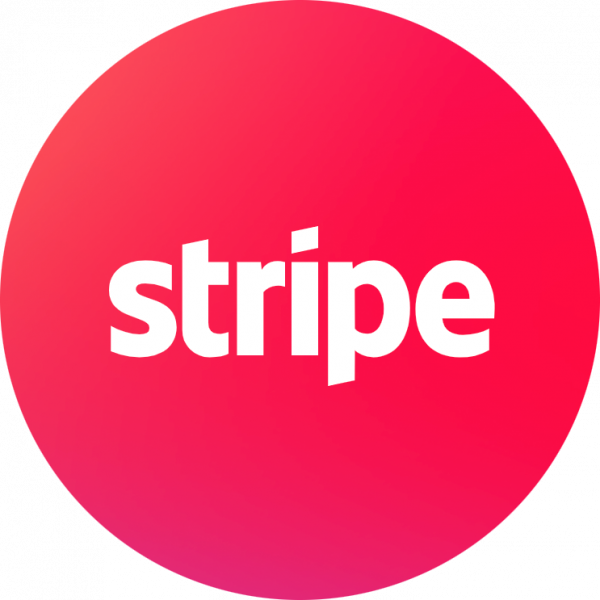In the 336th issue of ProcessWire Weekly we're going to introduce the Stripe action for FormBuilder, highlight some recent forum topics and other online resources, and more. Read on!
Welcome to the latest issue of ProcessWire Weekly! In this issue we're going to dig into the newly released Stripe Payment Processor action for the commercial FormBuilder module. This add-on module makes it real easy to create payment forms for your site, and thanks to the hookable architecture there's a lot of potential for customization.
In other news we're going to highlight some of the latest ProcessWire online resources — articles, case stories, etc. — and, last but not least, pick a brand new site of the week.
Thanks to all of our readers for being here with us again, and as always, any feedback is most welcome – please don't hesitate to drop us a line if there's anything in your mind you'd like to share with us.
In the processwire.com blog this week: Stripe Payment Processor for FormBuilder
This week in the processwire.com blog we've got a whole posts worth of details about the latest addition to the Pro modules family — or, to be more specific, an add-on for one of the most popular Pro modules, FormBuilder.
This week a second new module for processing Stripe payments has been added to FormBuilder. We’ll take a closer look at it in this blog post, plus we’ve got a demo of it here too.
— Ryan
 The Stripe Payment Processor in a nutshell — what it is, who it's for, and how does it work
The Stripe Payment Processor in a nutshell — what it is, who it's for, and how does it work
In a nutshell Stripe Payment Processor is a new action module for FormBuilder. It's a way to handle payments with ease: all you need is FormBuilder and a Stripe account with proper API keys.
Even though Stripe Payment Processor does roughly the same as the Stripe Inputfield, it's a completely different beast under the hood. Perhaps the most notable feature of this module is that due to the way it works, it's compatible with 3-D Secure payments. This is a security measure often connected to Strong Customer Authentication (SCA) requirement, which in turn is primarily applicable to EU based customers.
The way the Stripe Payment Processor module works is that it puts the form submission "on hold" until FormBuilder receives a confirmation from Stripe via a webhook. Once an end user has filled a form on your site they get forwarded to the Stripe payment GUI — and after payment is confirmed they get the normal FormBuilder success message.
Benefits provided by the Stripe Payment Processor (in comparison to the FormBuilder Stripe Inputfield)
Here are some of the benefits this payment method brings to the table in comparison to the Stripe Inputfield (which, for the record, is still valid and usable if you don't have to worry about SCA):
The actual payment screen and 3D Secure verification is fully hosted and managed by Stripe and protected by their security.
Built in support and mobile ready for Apple Pay and Google Pay.
Ability for customize the amount and line items (i.e. cart) that are charged with ProcessWire hooks.
Configuration options to collect shipping and/or billing addresses from Stripe, with ability to specify countries you ship to.
The first benefit can of course be seen as a drawback, depending on your point of view: this means that the user is taken away from your site to complete the payment. In some ways this may feel less "integrated" approach.
For more details about the Stripe Payment Processor module, including provided hooks and other potential power user features, be sure to check out the full blog post at the processwire.com blog. The post also contains an example payment form you can use to preview what the full process looks like. Thanks!
Weekly forum highlights, tutorials, and other online resources
Here's a brief selection of hopefully useful (and definitely interesting) online resources that have recently hit out radar. As always, be sure to let us know if there's anything important we've missed, so that we can include it in one of our future issues.
- First of all a repost from our last week's issue: cowirt.at is a "check-in service" built by Markus Tiefenbacher using ProcessWire as the back-end, covered in the Heute online magazine (in German) earlier this month. Great idea and an interesting project from Markus!
- Next up is a blog post from Frank Vessia about managing a site with millions of pages with ProcessWire (in Italian). In his article Frank walks us through some of the settings and best practices he's used for making sure that the system scales into the millions of pages range. Some great advice in here.
- Another article from Frank (also in Italian) is the one in which he talks about MVC model and ProcessWire. In this post Frank introduces the Template Engine Factory module, walks us through some templating language basics, and more.
- Lastly we've got a Medium article from none other than Frank Vessia, in which he covers the reasons he chose ProcessWire over WordPress and CakePHP way back in 2010, as well as why he's stayed with us ever since then. Very interesting read!
As for case stories, here are some recent ones — one from German web and Internet agency schwarzdesign, another from Indian digital marketing agency Pigtail Pundits, and third one from UK based Presto Web Design:
- The one from schwarzdesign covers a website they built for artists and concerts agency markus bröhl. It's a great looking site and it's always interesting to hear a bit about the backgrounds of such projects.
- Next up is a case story for a new website built by Pigtail Pundits for Bay Tech 360. Again an interesting read that provides us a quick sneak peek behind the scenes, into the process leading up to this brilliant website.
- Finally, a case story about designing and developing the new website of Martins Hi-Fi. In this post the folks at Presto discuss the Martins Hi-Fi brand, and walk us through the website itself step by step,.
That's all for our weekly highlights. If you're interested in ProcessWire news, discussions, and updates, there's always something going on at the support forum. We're only able to include a tiny selection of all that in our issues, so head down to the forum for more.
Site of the week: Foodatelier
 Our latest site of the week is one called Foodatelier, the portfolio of the German food stylist and photographer Rafael Pranschke.
Our latest site of the week is one called Foodatelier, the portfolio of the German food stylist and photographer Rafael Pranschke.
The Foodatelier website was skillfully crafted by Markenpartner GmbH, and features a stylish design, numerous photo and video galleries, and a bunch of content pages introducing the services, studio, and team of Foodatelier. All in all this is a very nice looking website that puts the end product — the works created by Foodatelier — right in the spotlight.
The front-end of this site is built using the Uikit front-end framework, with some help from various third party libraries; libraries such as jQuery Scrollify, the utility library powering those neat looking section-to-section scroll effects. As for the backend, all we've got is a quote from the site authors at our sites directory, stating that this site was built to be easy to maintain without any CMS expertise.
Big thanks to Markenpartner for sharing this project with us, and our congratulations to the whole Foodatelier team for their gorgeous, ProcessWire powered website — keep up the great work!
Stay tuned for our next issue
That's all for the 336th issue of ProcessWire Weekly. We'll be back with more news, updates, and content Saturday, 24th of October. As always, ProcessWire newsletter subscribers will get our updates a few days later.
Thanks for staying with us, once again. Hope you've had a great and productive week, and don't forget to check out the ProcessWire forums for more interesting topics. Until next week, happy hacking with ProcessWire!
Post a comment